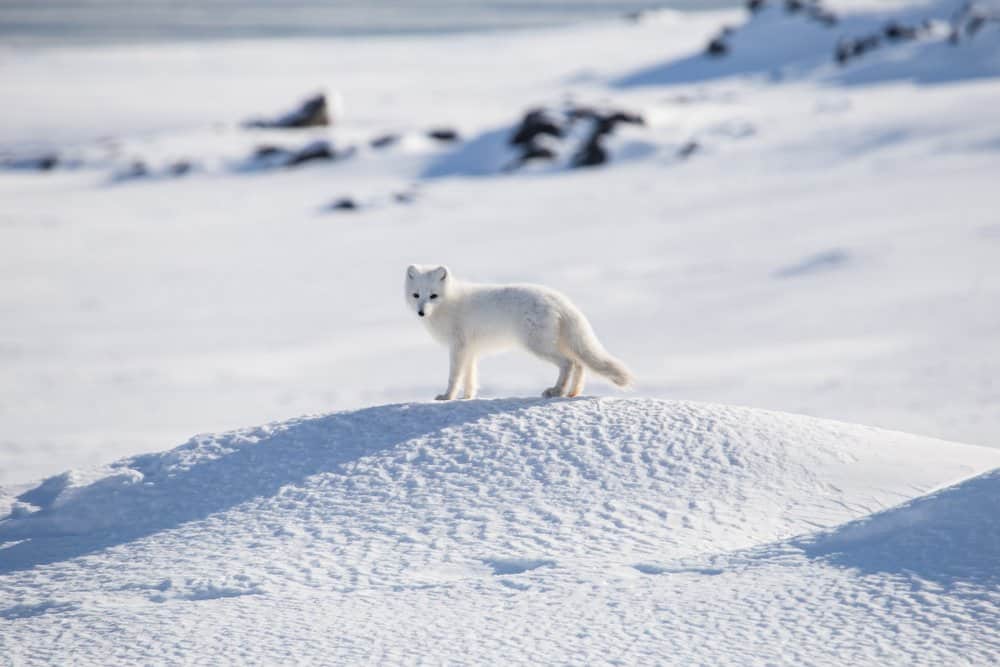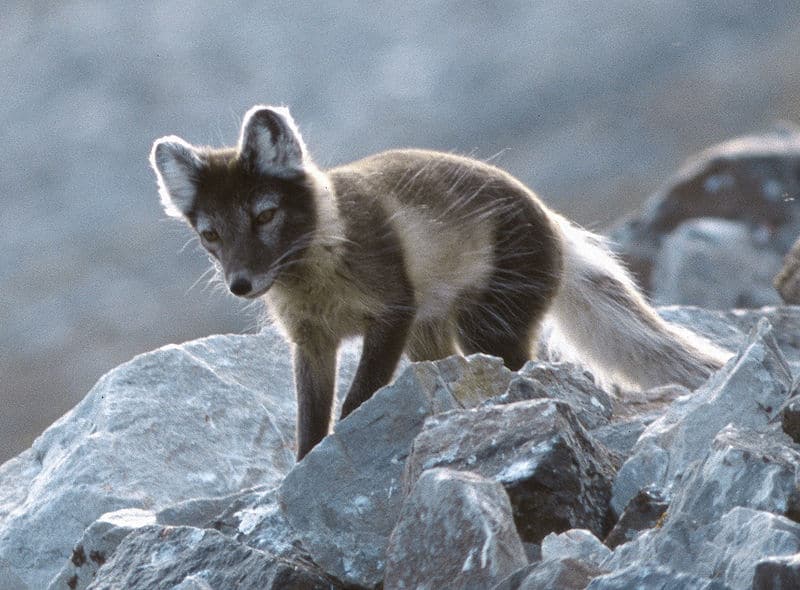
The post It’s a Lonesome Life for an Arctic Fox appeared first on A-Z Animals.
The hardy Arctic fox spends its winters hunting alone across the frigid landscape. But these little foxes mate for life, and when spring arrives, it’s time to go home and reunite with their mate. A YouTube video from National Geographic follows one male fox on his journey to find his mate. Did she survive the winter? Will they be able to mate and raise their family? Let’s find out.

Arctic foxes are well adapted to survive the harsh conditions of the Arctic Circle.
©JoannaPerchaluk/Shutterstock.com
About the Arctic Fox
Arctic foxes appear similar to red foxes, but are smaller and lighter, only growing about 12 inches tall. They sport a lush, pure white fur coat during winter. In the summer, you may not even recognize the Arctic fox. They shed their iconic white coats and grow short, dark fur.
Arctic foxes grow different coats as the seasons change. Their lighter summer fur helps them stay cool when temperatures rise. These seasonal coats don’t just regulate body temperature, but also serve as camouflage. In winter, their white fur helps them disappear into the snowy landscape. Once the snow melts, their fur turns darker, helping them blend into the summer surroundings.
Where Do Arctic Foxes Live?
Arctic foxes live on the Arctic tundra beyond the tree line, where the world is covered by snow and ice. In North America, they live in Alaska and northern Canada. They are well adapted to cold environments and can survive temperatures as low as -58 degrees Fahrenheit (-50 degrees Celsius) or even colder.
Are Arctic Foxes Social Animals?
Arctic foxes mate for life, although they separate during the winter to search the frozen landscape for food. According to the video we mentioned above, Arctic foxes return to their mating grounds each spring to reunite with their mates. During summer, the parents stay together to care for their young. The mothers have large litters from 7 to 14 kits, also known as cubs or pups.

A mated pair of Arctic foxes reunites after a long winter.
©National Geographic / YouTube – Original
Both mother and father protect the babies and bring them food. When the babies are old enough, their parents will teach them how to hunt. When the cubs are about five months old, they are big enough to live independently. By this time, winter is approaching, and the family group separates to hunt alone.

Arctic foxes raise their cubs in the summer when food is plentiful.
©Giedriius/Shutterstock.com
In the video, National Geographic followed the journey of a male Arctic fox as he returned in the spring to find his lifelong mate. Fortunately, she appeared. After a warm greeting for each other, the two ran off across the frozen landscape. According to the narrator, it is “Time to get on with the business of becoming mom and dad and to raise their litter of pups before the end of summer.”
How Arctic Foxes Survive Harsh Winters
Foxes are omnivores and eat a mixed diet of meat and plants. In the summer, there are plenty of berries, birds, and small mammals, such as lemmings and voles, to feast on. The foxes also eat the eggs of migratory nesting birds.
During winter, food becomes scarce. At this time, the foxes will scavenge for anything they can find. According to National Geographic, when food becomes hard to find, Arctic foxes have been seen following polar bears. They are waiting to eat the leftovers of reindeer and seal carcasses that the bears leave behind. They are opportunistic feeders, and if they come across human litter, they have been known to eat it as well. An investigation into the scat of Arctic foxes in Svalbard found the animals had digested plastic and paper bags. Arctic foxes travel many miles during winter in search of food. One research study from 2018 found that a female Arctic fox traveled nearly 2,500 miles in one year.
Where Do Arctic Foxes Sleep?
In the summer, Arctic foxes raise their young in dens that they make underground. These dens contain many networks of tunnels with multiple entrances. The foxes may return to the dens many years in a row.

Arctic foxes lose their pure white winter coats during summer.
They don’t typically live in dens during winter, but instead sleep in the open. Their warm fur is designed to regulate their body temperature, keeping them at a toasty 100 degrees Fahrenheit. The foxes eat plenty of food in the summer and fall to build up their fat stores to keep their organs insulated. They wrap their long, fluffy tails around themselves when they sleep to keep warm. During winter storms, they sometimes burrow in the snow to create a temporary shelter.
The post It’s a Lonesome Life for an Arctic Fox appeared first on A-Z Animals.
July 26, 2025 at 11:02PMJennifer Geer
.jpeg)
.jpeg)

0 Comments